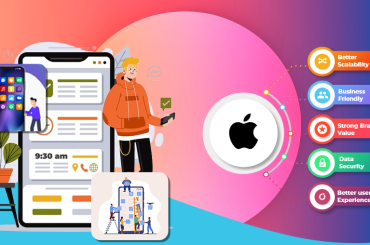In a world where the effects of climate change are becoming increasingly evident, the need for innovative solutions has never been more urgent. Tech giants like Google are stepping up to the plate, leveraging their expertise to combat climate change through the development of cutting-edge Application Programming Interfaces (APIs). Google’s latest APIs are not just transforming the way we interact with technology but are also playing a significant role in addressing environmental challenges. VR app development services are there to help businesses incorporate the same.
Understanding Google’s Climate Change Initiatives
Google has long been committed to reducing its carbon footprint and advancing sustainability. The company is known for its massive investments in renewable energy and ambitious commitments to operate on 100% clean energy. Their latest initiatives, however, are aimed at leveraging their technological prowess to combat climate change and mitigate its effects.
Google Earth Engine API
One of the most notable additions to Google’s climate-focused APIs is the Google Earth Engine API. Google Earth Engine is a powerful platform that combines satellite imagery, geospatial data, and machine learning to monitor and understand our planet’s changes.
This platform enables developers to access and Utilise an extensive library of geospatial data, from historical imagery to real-time climate data. By providing such comprehensive tools and resources, the Google Earth Engine API allows developers to create applications that help address climate change concerns, such as deforestation monitoring, land use management, and disaster prediction. This is where the iOS application development services come to play.
Google Cloud Environmental Insights Explorer API
Google’s commitment to environmental sustainability is not limited to just monitoring and analysis. The Google Cloud Environmental Insights Explorer API is a valuable resource for businesses and organization’s looking to reduce their carbon footprint. This API offers real-time carbon footprint data, enabling developers to build applications that help organization’s make data-driven decisions to lower their environmental impact. By providing access to data on energy consumption, emissions, and renewable energy potential, this API supports a sustainable future for businesses and communities.
Google Maps Climate API
In the quest to make everyday decisions that align with environmental goals, the Google Maps Climate API stands out. This API offers climate data for specific locations, allowing developers to build applications that help users make eco-conscious choices. For instance, it can provide data on weather conditions, carbon emissions, and air quality in real-time, helping users make decisions like choosing a less-polluted route for their commute or selecting a restaurant with a smaller carbon footprint.
The Synergy: How Google’s Climate APIs Affect the Wider API Ecosystem
While Google’s climate APIs are primarily designed to address environmental concerns,
their impact on the wider API ecosystem is significant. These APIs are pushing the boundaries of what APIs can achieve, setting new standards for data access, analytics, and visualization. By offering powerful and user-friendly tools to developers, Google is catalyzing a movement towards building applications that priorities’ sustainability.
Moreover, Google’s focus on fighting climate change has prompted other tech giants and startups to follow suit, leading to a collective effort to leverage technology for the betterment of our planet. This shift towards eco-conscious API development marks a turning point in the tech industry and sets an inspiring precedent for addressing global challenges through innovative programming interfaces.
Also Read About:- https://www.appikr.com/blog/guide-to-developing-a-secure-fintech-app/
Effects on the APIs
The effects of Google’s climate-focused APIs on the broader API ecosystem are substantial and multifaceted. They extend beyond addressing environmental concerns, influencing how APIs are developed and utilized, and contributing to a shift in the tech industry’s priorities. Here, we delve into these effects in more detail:
1. Expanding Data Accessibility:
Google’s climate APIs provide access to a vast array of geospatial, environmental, and climate data. This availability of high-quality, real-time data sets a new standard for data accessibility. Developers now expect APIs to provide more comprehensive and specialized data, not just for environmental concerns but across various domains.
2. Data Analysis and Visualization:
The climate APIs enable developers to perform advanced data analysis and visualization. This pushes the envelope for APIs in general, as developers now seek to create APIs that not only provide raw data but also offer tools for meaningful data interpretation. This shift towards data-driven decision-making impacts multiple industries beyond climate science.
3. Machine Learning Integration
Google’s Earth Engine API harnesses machine learning to process vast datasets. This integration of machine learning into API design is now influencing other APIs, leading to the incorporation of artificial intelligence and machine learning capabilities across different application domains.
4. Sustainability Integration
Google’s focus on fighting climate change within APIs encourages developers to consider sustainability in their applications. This shift has resulted in the development of APIs that offer carbon footprint calculations, energy efficiency recommendations, and eco-conscious decision-making tools. The integration of sustainability concerns is becoming a key feature in various API offerings. iOS and Android application development can help integrate the
same into an online business.
5. Collaboration and Open Data
Google’s APIs often involve open data initiatives, allowing researchers, governments, and organization’s to collaborate on environmental research. This collaborative approach influences other API providers to consider the importance of open data sharing, fostering partnerships and collective efforts to address global challenges.
6. Market Demand for Eco-Friendly APIs
As awareness of climate change and environmental sustainability grows, there is an increasing demand for eco-friendly APIs. Companies and organization’s are seeking APIs that help them reduce their carbon footprint, optimize resource use, and make sustainable decisions. This demand has opened up a new market niche within the API ecosystem.
7. Regulatory Compliance
The iPhone app development services and use of climate-focused APIs often intersect with regulatory requirements for environmental reporting and sustainability. This influence extends to other sectors where APIs are now developed to meet industry-specific regulations and compliance standards.
8. Inspiring Innovation
Google’s climate APIs serve as a source of inspiration for developers, startups, and the tech companies. They demonstrate the potential for APIs to tackle critical global issues and drive innovation. This inspiration has led to the emergence of startups and initiatives that priorities environmental sustainability in their API offerings.
9. Raising Ethical and Social Responsibility Standards
The development and use of climate-focused APIs have catalyzed discussions on ethics and social responsibility within the tech industry. Tech companies are increasingly held accountable for their environmental impact and are expected to contribute to solutions. This shift in expectations affects API providers, who are now encouraged to align their offerings with ethical and sustainable values.
Conclusion
Google’s latest APIs represent a remarkable intersection of technology and environmental conservation. These APIs are not only driving progress in the fight against climate change but also inspiring a broader movement within the API ecosystem. By providing developers with tools and resources to create innovative solutions for sustainability, Google is reshaping the way we interact with the technology and the world. As we look ahead, it’s exciting to envision the profound impact these APIs will have on the future of our planet and the tech industry as a whole. Those looking to incorporate the latest Google APIs can contact a trusted wearable app development company like Fluper.
FAQs
1. What are Google’s climate-focused APIs, and how do they work?
Google’s climate-focused APIs, such as the Google Earth Engine API and Google Maps Climate API, provide access to environmental and climate data. They use satellite imagery, geospatial data, machine learning, and other technologies to monitor, analyze, and visualize climate related information, enabling developers to create applications to address environmental challenges.
2. How do these APIs influence the broader API ecosystem?
Google’s climate-focused APIs set new standards for data accessibility, data analysis, and visualization in the API ecosystem. They inspire the integration of machine learning and sustainability concerns into API design, promote collaboration, and encourage the iOS and Android app development of eco-friendly APIs.
3. What industries are most affected by the effects of these climate-focused APIs?
While the primary focus is on addressing climate change, the influence of these APIs extends to a wide range of industries. Sectors like agriculture, energy, transportation, urban planning, and disaster management benefit from the innovative data, analysis, and visualization tools offered by these APIs.
4. Are these APIs freely available for developers to use?
Google provides access to some of its climate-focused APIs for free or with a limited free tier, but there may be usage charges for more extensive or commercial usage. Developers should review the API documentation and pricing details for specific information.
5. How can businesses and organization benefit from these APIs to reduce their
carbon footprint?
Google’s climate APIs, like the Google Cloud Environmental Insights Explorer API, offer real-time carbon footprint data, enabling businesses to make data-driven decisions to lower their environmental impact. By accessing data on energy consumption, emissions, and renewable energy potential, organizations can optimize their sustainability efforts.





